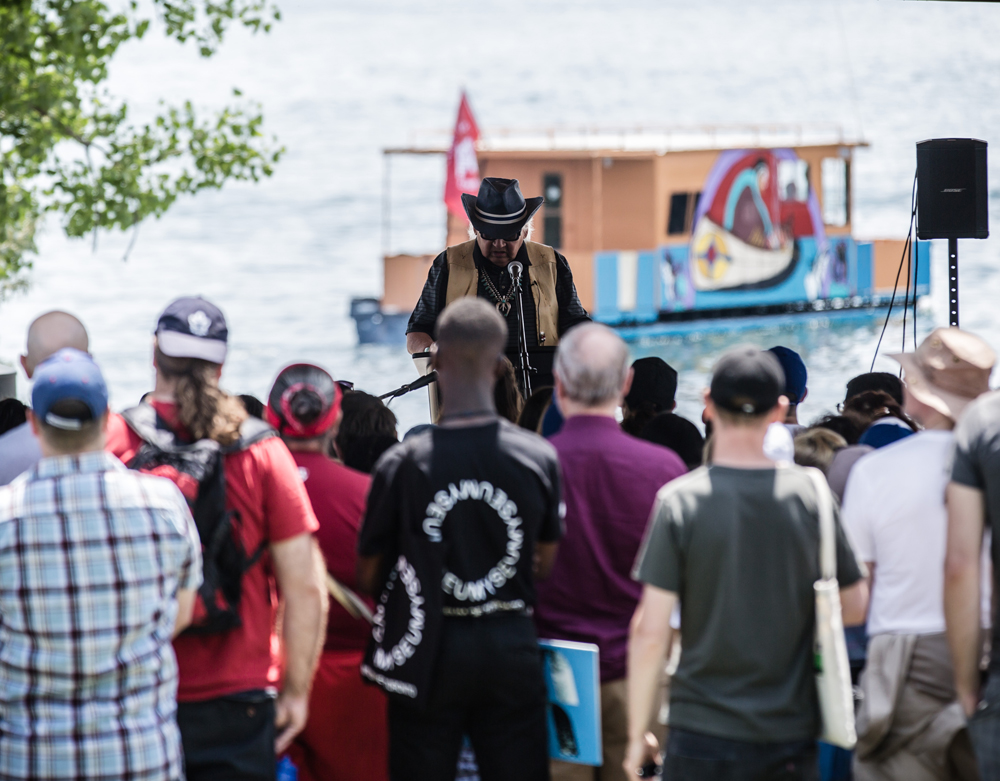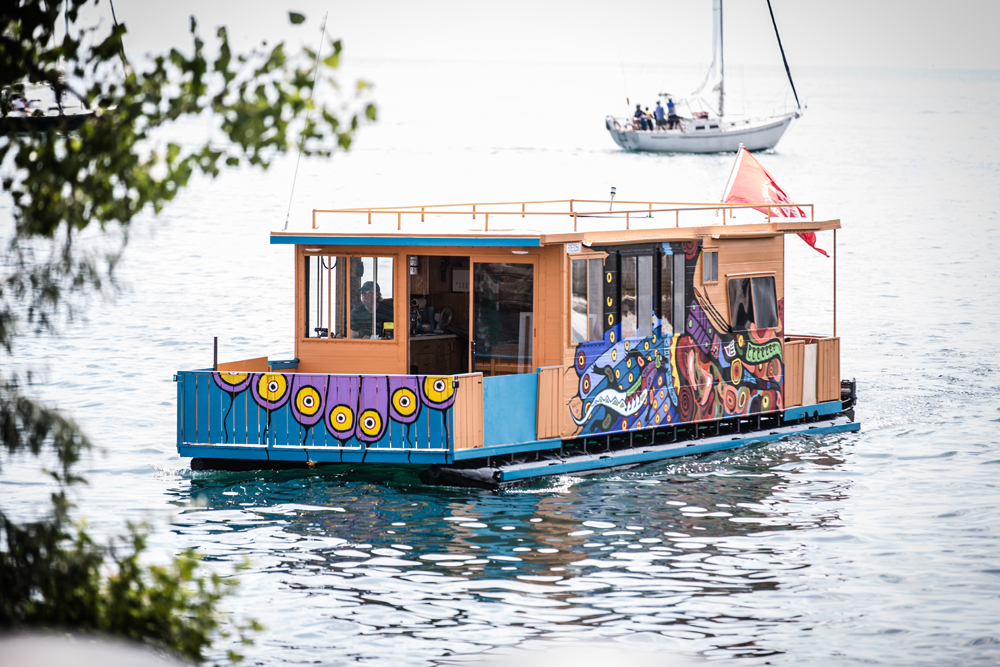Notes: A miscellany of news and events
floating museum
Despite its reputation for being underused, from June to October, Ontario Place was the site of Myseum and Duke Redbird’s “Wigwam Chi-Chemung.” Part art installation, part Indigenous learning centre, the pop-up museum housed by a 40-foot long pontoon houseboat, docked at the iconic provincial site, and with public hours where people engaged with, and learned from Indigenous elders. For more information, visit: myseumoftoronto.com/exhibition/wigwam/.



in memoriam
Barry Hughes
The OALA is saddened to announce the passing of Barry H. Hughes on February 9, 2019. Barry had been a full member of the OALA since September 1985. The Association was notified on August 6, 2019.
Barry began his journey in the landscape profession as a graduate of the Horticulture program at Niagara College School of Horticulture and fondly reminisced about his opportunities to practice what he learned at the greenhouses and gardens of Rideau Hall and at the City of Brockville where he supervised the greenhouses, floricultural design, and tree planting programs.
In 1981 Barry was hired by the newly formed City of Kanata, where for five years he supervised the growth of the parks system that formed the backbone of the community design that Kanata became nationally recognized for as a model of good urban design.
From 1986 to 1991, Barry took on the challenging position of Director of Parks for the Town of Markham, a fast growing community, where during his time, over 25 parks were designed and constructed while still responsible for overseeing the maintenance of 130 parks, three Heritage district main streets and a significant open space river corridor system which included the Don and Rouge River Valleys. Barry took pride in Markham’s greenhouses and participation in Communities in Bloom and enjoyed his part in creating beautiful parks, communities and historic main streets. When asked what accomplishment he was most proud of during his time at Markham he would speak about the Milne Dam Conservation Park, a 123 hectare park where Barry, as Director of Parks, collaborated with the local resident volunteers and the Conservation Authority to enhance the cold water fishery streams that were discovered in the park and which later were instrumental in helping to identify the uniqueness of the Rouge River in this area and eventually lead to its protection as the Rouge River Park system, which recently became a National Park.
In 1991 Barry and his wife Maureen moved their family back to rural Ottawa. Barry’s love of parks lead him to his next position as the Manager of Parks and Recreation and Planning for the St. Lawrence Parks Commission where he was responsible for planning development and operations for 12 provincial parks, a marina, a golf course, a bird migration sanctuary, the Thousand Island Parkway, and 4,000 hectares of provincial parkland.
Throughout his career Barry was generous with sharing his experience and knowledge and was an advisor to many organizations like the Ontario Shade Tree Council, Seneca and Fleming Colleges; mentoring students in Bridge to Work programs while also speaking at many conferences and to Horticultural Societies. Barry was proud to be a member of the OALA, CSLA, and the Canadian and Ontario Parks Associations.
Barry passed away on February 9, 2019 from a rare form of Parkinson’s Disease called Multiple System Atrophy. Barry and Maureen’s children Arthur, Matthew and Bronwyn will miss the gentle guidance of their father, but have been inspired by their father and mother’s love of the outdoors and nature to pursue careers that allow them to carry on with the stewardship of nature that their father so valued.

new members
The Ontario Association of Landscape Architects is proud to recognize and welcome the following new members to the Association:
- Gregory Baskin
- Eric Conway
- Hillary Eppel
- Kyle Foch Nathan Torenvliet
- Anna Ingebrigtsen *
- Leah Lanteigne *
- Xiaoming Liu *
- Stephanie Payne *
- Michelle Peeters
- Steven Saldanha *
- Jennifer Sisson
- Josephine Vaughn (ne Lazarz)
- Stephanie Wilson
Asterisk (*) denotes Full Members without the use of professional seal.
licensing
The Council of Landscape Architectural Registration Boards (CLARB) has helped found the Alliance for Responsible Professional Licensing (ARPL).
The goal is to continue to educate lawmakers about the need to maintain licensing standards in the landscape architect profession, in the face of what CLARB Senior Director of Strategy Veronica Meadows sees as “broad calls to reduce licensing requirements for occupations and vocations.”
You can learn more about the ARPL on their website: www.reponsiblelicensing.org
parks
This summer saw the grand re-opening of College Park in Toronto, after nine years of construction. The park is a public square, hemmed in by tall buildings, between Bay and Yonge, College to Gerrard Street West.
The makeover was paid for by a partnership between the City, the Yonge BIA, and developers Canderel Stoneridge, for an estimated $8.2 million.
The revitalized space now includes gardens and green space, a reflecting pool, play area, and the Barbara Ann Scott Ice Trail— replacing the former skating rink.


landmarks
Love it or hate it, the iconic “Toronto Sign” is here to stay.
Originally installed in front of City Hall as part of the 2015 Pan American Games, the sign quickly became a favourite selfie spot for visitors and locals alike.
While some critics argue it was not meant to be a permanent fixture, and wasn’t part of a lengthy re-imagining process for the public square, it’s largely considered a beloved addition to Nathan Phillips Square, and helps activate the space, year round.
The idea is to replace the original, temporary sign, with more permanent and durable materials. While the City will pay for the replacement with reserve funds, they are open to kindly donations.
The new Toronto Sign should be in place in time to ring in 2020.

